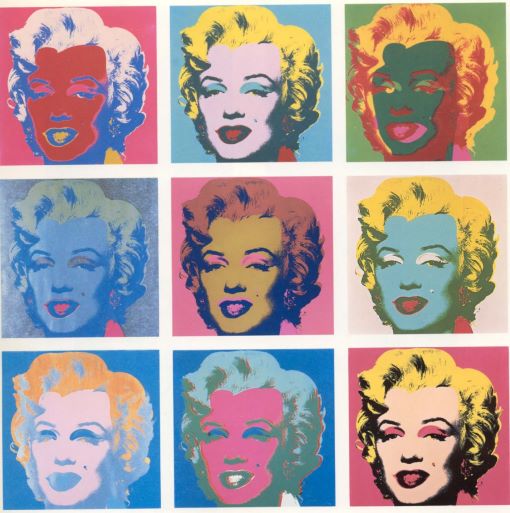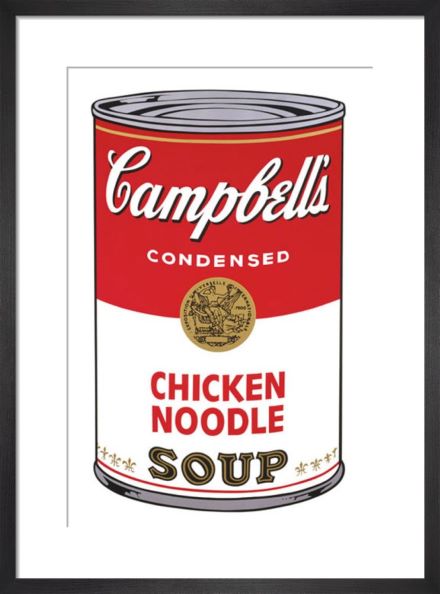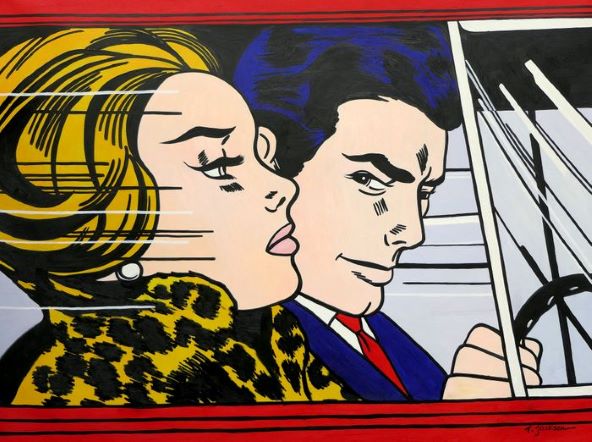
Pop Art has always fascinated me. Few movements in the 20th century offer so little to hold my aesthetic attention, yet few have made me aware of so much about myself and my cultural moment. The fact that one of Andy Warhol’s canvases is so barren after its first powerful impact seems to me to be the whole point, whether or not he would admit to that intention. And it is a point that raises serious issues about what art can be for the contemporary viewer.
Our period is characterized by an absolute glut of images, bombarding us from all sides, against which we must defend ourselves if we are to survive. Contrast this with the middle ages, when an image such as a manuscript page was precious in its rarity, lovingly and painstakingly created and treasured by its viewers. It is clear from cave paintings to tribal crafts that mankind has an absolute need for images, images to help organize our understanding of the world and our place in it. Until recently, we could not get enough.


The printing press changed all that, and the advent of photography carried the image revolution a giant step further. Images are everywhere, and as a consequence, our relationship to them has fundamentally changed. We in the 20th and 21st centuries are in fact very sophisticated in our image processing mechanisms, but it is not a sophistication of a subtle or contemplative kind. It is a sophistication of speed and efficiency. Can you grasp the amazing process you go through when you leaf through a magazine at the dentist’s office, registering and dismissing hundreds of images clamoring for your attention, as you look for the continuation of the article you are reading? Or, to return to Warhol, the process of passing down a supermarket aisle looking for soup, actually for Campbell’s soup, and not just any: Chicken Gumbo. To get the Chicken Gumbo and not the Cream of Chicken, and still get out of the supermarket in time for Yoga, you must ignore everything but the essential information, that which is of use to you. You register the red/white of Campbells’ label in an instant and move on to the words. Similarly, have you grasped how marvellous is your ability to interpret instantly the sparse visual clues given in a work like Lichtenstein’s, or the comic books he is imitating? How easily you interpret hair, glass, even expression…but how little time you are willing to devote to the image itself!
I hear Warhol and Lichtenstein saying to me “you are a contemporary man; this is the kind of image you are able to handle, the one you deserve, since you have made this culture of ours”. And in fact, in order to appreciate images at a greater level of subtlety, we must unlearn everything which the culture teaches us about how to approach images to survive.